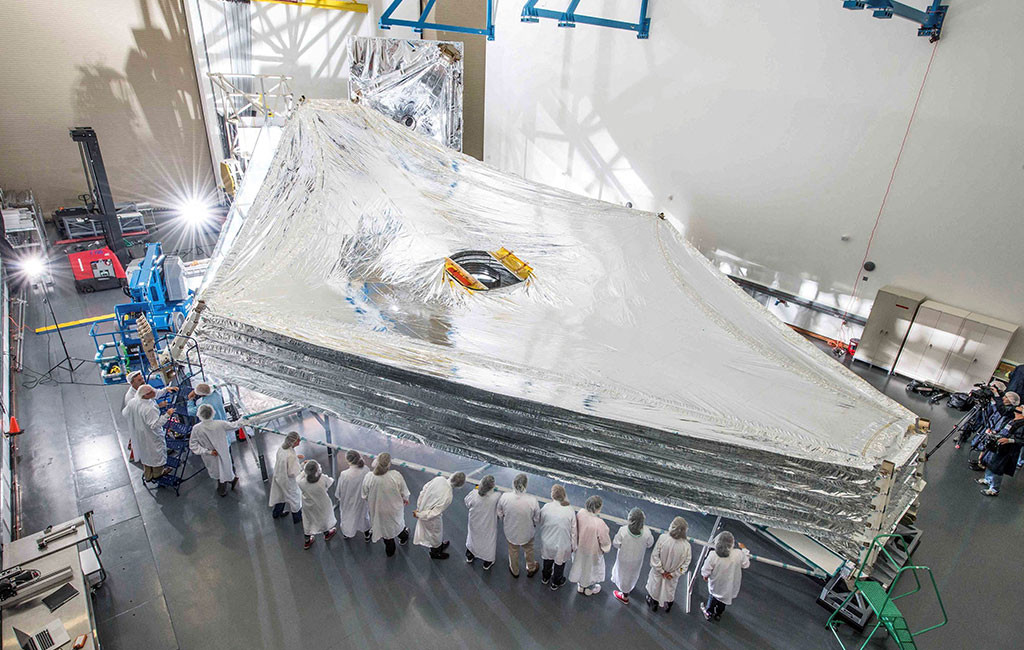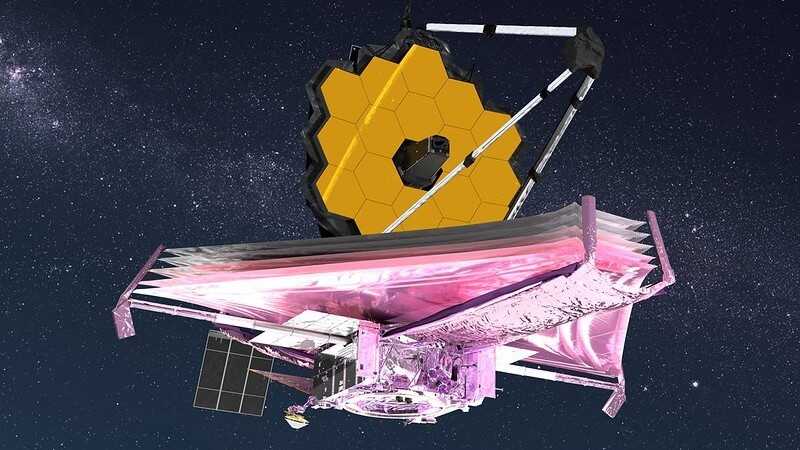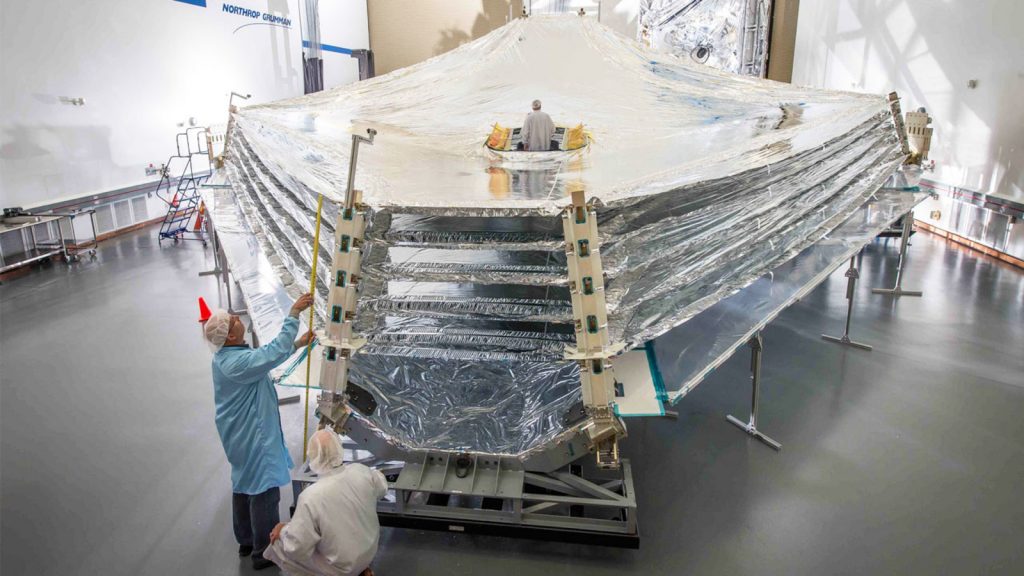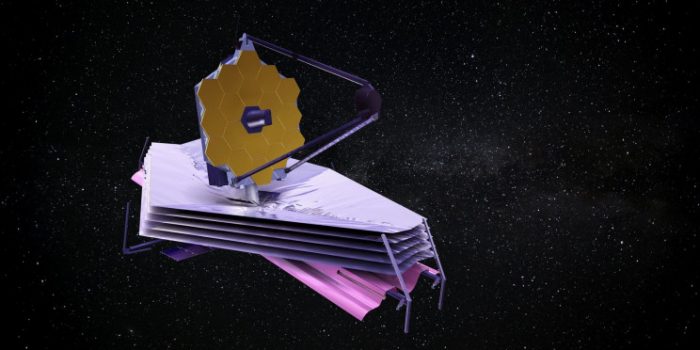On Tuesday, the James Webb Space Telescope, which is now more than 570,000 miles away from Earth, finished extending all five layers of its sunshield, completing one of the most complex tasks in the observatory’s initial activation.
The fifth and final hair-thin layer of the 70-foot-long, 54-foot-wide sunshade was pushed into place and firmly secured using six motors attached to 90 stainless steel cables running through dozens of pulleys, giving Webb its notable multi kite-like appearance.

“Significant milestone accomplished!” said Carl Starr, the mission operations manager, amid a burst of cheers and applause. “Job well done, sunshield team. Job well done.”
“We’ve still got a lot of work to do, but getting the sunshield out and deployed is really, really big. The JWST team is the best in NASA. There is, hands down, nobody better than what we have here. You guys should all take pride in all these accomplishments,” he said.
The largest and most powerful telescope ever built, the Webb telescope is designed to catch light from the first stars and galaxies to form after the Big Bang 13.8 billion years ago.
“This is the first time anyone has ever attempted to put a telescope this large into space,” said Thomas Zurbuchen, associate administrator for NASA’s Science Mission Directorate at the agency’s headquarters in Washington.

“Webb required not only careful assembly but also careful deployments. The success of its most challenging deployment – the sunshield – is an incredible testament to the human ingenuity and engineering skill that will enable Webb to accomplish its science goals.”
The five-layered sunshield will shield the telescope from the Sun, Earth, and Moon’s light and heat. These layers attempt to minimize solar energy exposure from over 200 kilowatts to a fraction of a watt.
“Unfolding Webb’s sunshield in space is an incredible milestone, crucial to the success of the mission,” said Gregory L. Robinson, Webb’s program director at NASA Headquarters.
“Thousands of parts had to work with precision for this marvel of engineering to unfurl fully. The team has accomplished an audacious feat with the complexity of this deployment – one of the boldest undertakings yet for Webb.”

The deployment of the secondary and primary mirror wings, alignment of the telescope optics, and calibration of the science equipment are all part of the setup process for the world’s largest and most complicated space science observatory, which will take another 5 1/2 months. Webb will then transmit its first photographs.
The telescope’s ground-breaking technology will look into every aspect of cosmic history, from our own solar system to the farthest detectable galaxies in the early cosmos and everything in between. Webb will make fresh and unexpected findings that will aid humanity in understanding the universe’s beginnings and our place within it.


